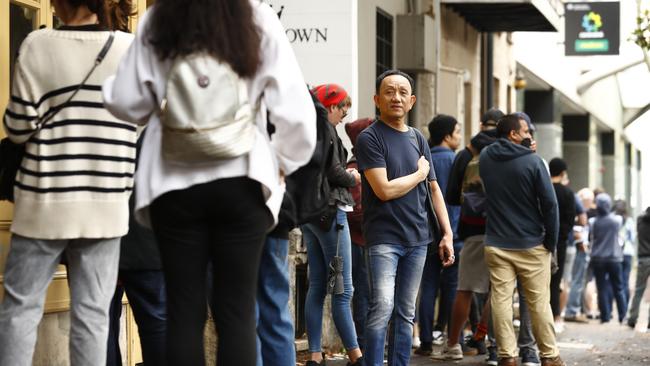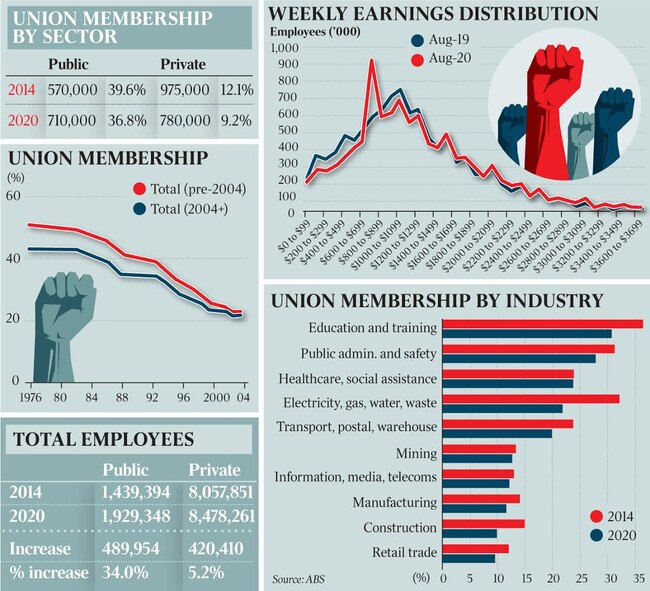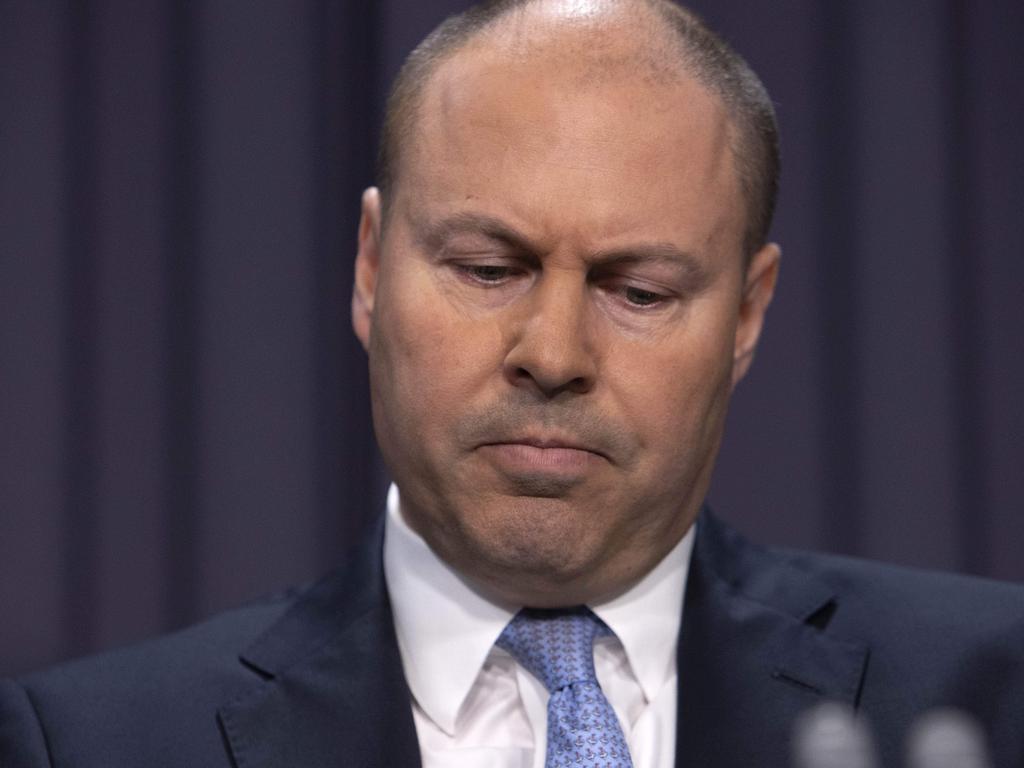Workers in private sector turn their backs on unions
Union membership in the private sector has fallen to a record low of 9 per cent, a decline of almost 200,000 members in six years.

Union membership in the private sector has fallen to a record low of 9 per cent, a decline of almost 200,000 members in six years.
Less than one in 10 private sector workers now belongs to union.
Data compiled by the ABS for The Weekend Australian reveals 780,000 private sector workers were members in 2020 compared to 975,000 in 2014, a fall of 195,000.
The ABS said private sector union membership fell from 12.1 per cent to 9.2 per cent over the six years, and now sits at the lowest on record, with the exception of records prior to 1911 when trade unions were just starting to emerge.
In contrast, public sector union membership grew from 570,00 to 710,000 members between 2014 and 2020. However, public sector membership fell in percentage terms from 39.6 per cent to 36.8 per cent.
The ABS reveals a continuing overall decline in union membership, down to 14.3 per cent of all employees in August this year.
In August 2018 it was 14.6 per cent. This is a far cry from the early 1990s, when union membership was 40.3 per cent in 1992, and even just a decade ago when the figure was 19.5 per cent.
The ABS employment data also shows casual workers have borne the brunt of COVID-19, accounting for two-thirds of all job losses in the early part of the pandemic despite making up less than 25 per cent of the workforce.
“Total employment fell from around 13 million to 12.2 million between February and May 2020, with two thirds of the fall occurring in casual employment,” ABS head of labour statistics Bjorn Jarvis said. “This fall in the first stage of COVID-19 saw the proportion of casual workers fall from 25 per cent to 20 per cent of all workers.”
About 200,000 of the half a million casual jobs lost in the first stage of the pandemic had been recovered by August. ABS data through to November will be released before Christmas, clarifying the pace of recovery.
ACTU secretary Sally McManus said the data illustrated the pandemic’s impact on casual workers. “Casual workers were the first to lose their jobs at the start of the pandemic. More than half a million lost work. This data shows that the effect of this is still being felt and is nothing to celebrate,” she said.

“We need to ensure that the recovery creates secure work and halves insecure work. Unfortunately, at this stage, the data shows that huge numbers of the jobs which are being created are simply replacing the insecure jobs which have been lost.”
Overall, median employee earnings increased by $50 a week to $1150 in the year to August 2020, with JobKeeper a key to the rise. In August this year 920,000 employees were earning between $700 and $799 a week, significantly higher than the 580,000 earning in that range in August last year. “Most of this increase was from workers who earned $750 per week, which are likely to include employees who received the $1500 per fortnight JobKeeper supplement (before the payments were reduced in September),” the ABS report said.
Median earnings for casuals increased by more than the overall increase for workers, from $546 in August last year to $624 a year later. “This strong increase reflected the loss of many low-paid casual jobs and some casuals earning more as a result of JobKeeper support,” the ABS said.
The data found falling trade union membership across all industries. The education and training sector maintains the highest proportion of unionised labour, at 31 per cent, down from 36 per cent in 2014.
The mining and healthcare sectors have been most successful at maintaining union membership in recent years.
The ABS figures show lower trade union membership among part-time and younger workers, but significantly higher median wages for union members compared to non-union employees.
“Around 12.3 per cent of part-time employees were trade union members compared to 15.3 per cent who worked in full-time jobs,” it said.







To join the conversation, please log in. Don't have an account? Register
Join the conversation, you are commenting as Logout